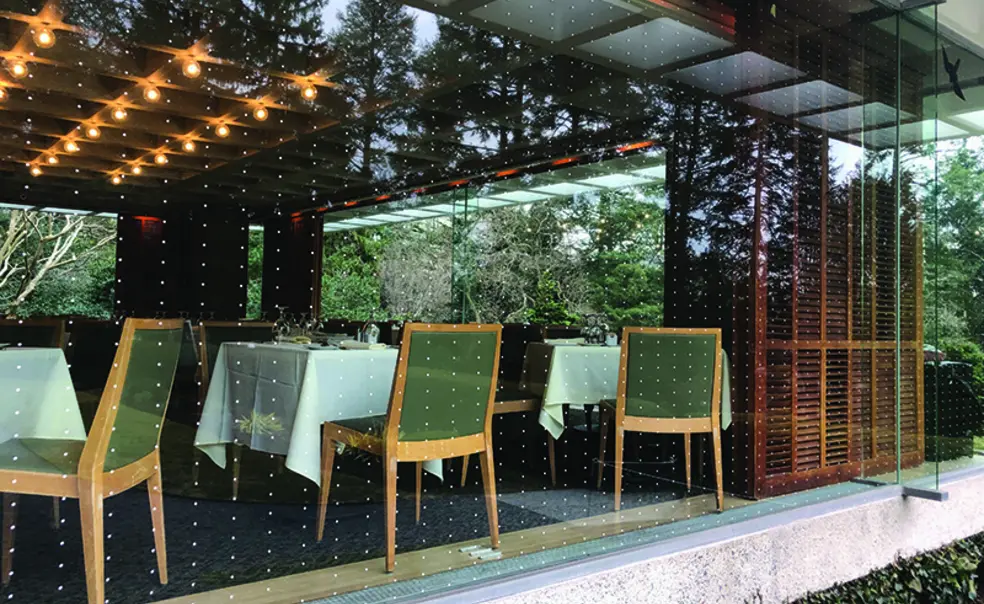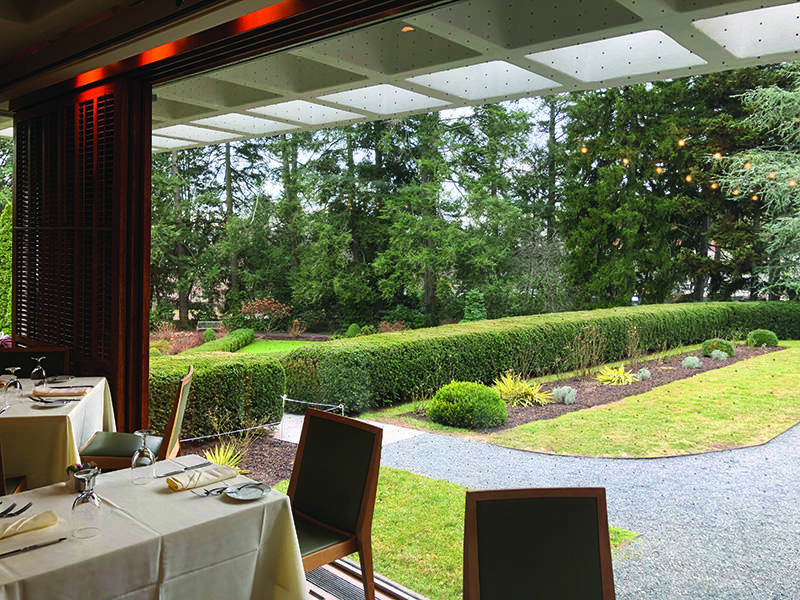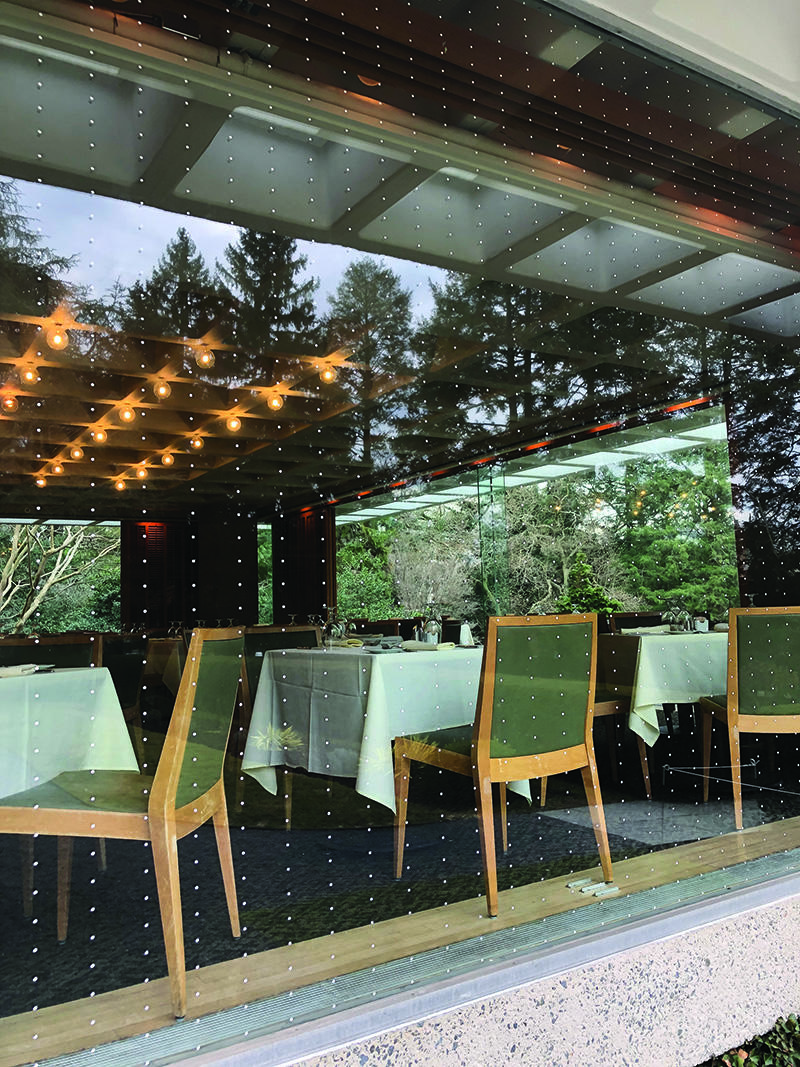Dotted Film Applied to Prevent Bird Collisions at Prospect’s Garden Room
The ‘big sticker’ should deter birds from trying to fly through the glass
Look closely at one of the floor-to-ceiling glass walls of the Garden Room at Prospect House, and a pattern of tiny dots will emerge. For humans, the dots are barely noticeable, but for birds, they can be a lifesaver.
The transparent film that has been applied to the glass is a victory for the Princeton Birding Society, which for the past few years has been monitoring bird collisions at Prospect and a few other spots around campus. They found about 10 birds — many of them tropical migrants like warblers — died each year after trying to fly straight through Prospect’s glass-enclosed room.
Claire Wayner ’22, who grew up birding and co-founded the society, had done bird window collision monitoring in Baltimore before coming to Princeton and was aware of the threat that glass poses. Students came to understand it as well: The birding society collected hundreds of signatures on a petition that it presented to the University to help make its case.
She described the film made by Feather Friendly as a “big sticker” and credited University staff for working with students to make it happen.
“These birds are facing a number of other threats, from climate change to habitat destruction,” Wayner said. “So reducing the threat that they face from windows is really one of the easiest things that we can do.”
Dan Casey, a senior project planner in the University architect’s office, said when the birding society initially floated the idea, “we knew it would be slightly controversial because it’s an all-glass room and sort of an iconic space at Princeton.” His office looked at the data collected by students and ordered samples of the film. The one that was ultimately applied to the outside of Prospect’s west-facing window has white dots on a 2-inch-by-4-inch grid.
It took a while to finally get it installed, he said, but now it looks great.
“I was delighted with it. It does not interfere with the view at all, it’s barely perceptible from the outside,” Casey said. “It’s just enough to alert the birds that there’s a surface there.”
Casey said his office would like to see more film added to University buildings and is looking into putting language in its design standards manual so glass with a bird-safe pattern built into it would be considered for future campus building projects.
Patrick Newcombe ’25, who is currently president of the birding society, said the group continues to monitor spots around campus where existing buildings could be made safer for birds. One priority right now is the Frick Chemistry Laboratory, he said, where huge glass windows reflect nearby trees and make birds think they’re flying into the forest.
“These are pretty common-sense, low-cost measures to stop the harm to Princeton’s wildlife, so it’s great that the University is on board with taking them,” Newcombe said.














1 Response
William E. Heyd ’67
2 Years AgoClarification on Bird Deaths
The efforts to protect bird deaths from window crashes is great to see! Clarification of the statement, “They found about 10 birds ...” would be very helpful. Does this mean 10 individual birds, or 10 bird species? “Many of them tropical migrants” suggests that it is 10 bird species, but this is not clear.
Editor’s note: The students found about 10 individual birds, mostly of species that are tropical migrants and cross Princeton each year on their journeys north and south.